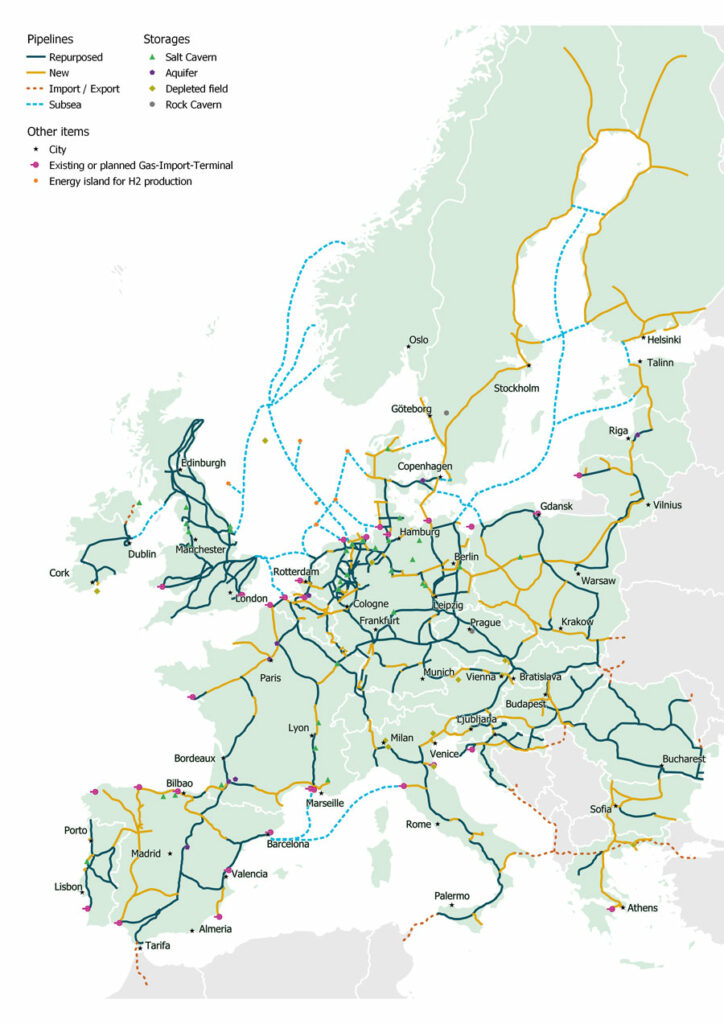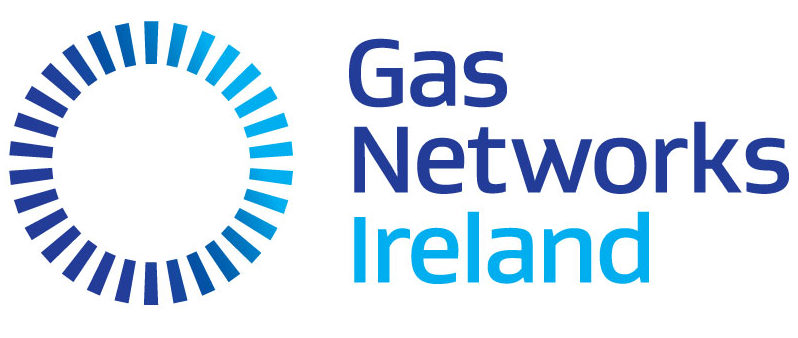Reaching Ireland’s green hydrogen potential
4 May 2023Power-to-X: The potential role of Ireland’s hydrogen economy
4 May 2023The gas network: Ireland’s hydrogen-ready infrastructure
In line with the latest Climate Action Plan (CAP), there is a need to decarbonise the national gas network with renewable gases. Gas Networks Ireland is now working on replacing natural gas with renewable gases, such as biomethane and hydrogen, to substantially reduce the country’s carbon emissions while complementing intermittent renewable electricity and ensuring a secure energy supply.
Replacing natural gas with renewable gases and using the existing renewables-ready 14,664km national gas network can reduce carbon emissions across a number of key sectors while also enhancing Ireland’s energy security and diversity. Ireland’s national gas network is a ready-made decarbonisation solution that can be leveraged to accommodate biomethane made from farm and food waste and hydrogen produced from offshore wind.
Biomethane: Renewable gas of the now
Structurally identical to natural gas, biomethane is a carbon neutral renewable gas that can be made from farm and food waste through a process known as anaerobic digestion. Gas Networks Ireland first introduced domestically produced biomethane onto Ireland’s gas network more than two years ago and it is beginning to seamlessly replace natural gas and is fully compatible with existing appliances and technology.
Green hydrogen: Renewable gas of the future
Green hydrogen is a carbon free gas that can be made from renewable electricity through a process known as electrolysis and stored until needed, making it an attractive option to decarbonise the Irish and EU energy systems and a strong example of how greater integration between Ireland’s gas and electricity networks can support a low carbon economy.
Testing blends of hydrogen gas on the network
Gas Networks Ireland has been working with University College Dublin’s Energy Institute (UCDEI) on a research project at its network innovation centre to investigate the potential use of hydrogen in Ireland and find out if we can heat homes and cook dinners with this renewable gas. The initial part of the research concluded in late 2022 and found that householders using natural gas blended with up to 20 per cent of hydrogen will not need to make any change to their existing domestic appliances or notice any difference and even the flame motion and colour is very similar to the flame produced with 100 per cent natural gas.

The European Hydrogen Backbone map shows the hydrogen network of 39,700km by 2040 comprising of 70 per cent repurposed gas networks connecting 21 European countries www.ehb.eu
The research results also outlined that significant reductions in emissions can be achieved by blending hydrogen with natural gas; including the following average reductions for domestic gas boilers operating at maximum load conditions – a 12 per cent reduction in carbon dioxide (CO2), a 37 per cent reduction in carbon monoxide (CO) and a 40 per cent reduction in nitrogen oxides (NOx) emissions. The next phase of the research will focus on the operation of the gas distribution network with blends of natural gas and hydrogen.
The report is available at: www.gasnetworks.ie/hydrogen-blend
European Hydrogen Backbone
With our European neighbours, Gas Networks Ireland is participating in a major project to help the European Union meet its new accelerated goals and radically increase the use of hydrogen by 2030. The European Hydrogen Backbone initiative is focused on planning for the future development of a European hydrogen market through new pan-European hydrogen transport infrastructure. Five large-scale hydrogen pipeline corridors are envisaged.
These new corridors will initially connect domestic local hydrogen supply and demand in Europe, before expanding and connecting European regions amongst each other, and then connecting neighbouring regions with hydrogen export potential. The planned hydrogen backbone network will largely be based on repurposing existing natural gas infrastructure. It is envisaged that by 2040, for example, Ireland could be connected to the new European hydrogen backbone via a repurposed subsea pipeline to the Moffat interconnector in Scotland.
Academic partnerships
Gas Networks Ireland is one of a number of industry players funding a new €16 million strategic partnership with Irish third level institutions that will examine how to holistically decarbonise the overall Irish energy sector. Led by UCDEI, NexSys (Next Generation Energy System) is also supported by Science Foundation Ireland.
Hydrogen technical and safety feasibility study
The Government’s Climate Action Plan (CAP) sets out detailed measures to cut emissions and meet Ireland’s targets in each sector. One of the actions is to develop renewable gas in the gas grid. As part of this Gas Networks Ireland produced a technical and safety feasibility study of injecting green hydrogen blends into Ireland’s gas network. In line with other UK and European studies, this assessment has concluded that utilising the existing gas network to transport up to a 20 per cent hydrogen blend is safe and feasible.
The report is available at: www.gasnetworks.ie/hydrogen-study
National hydrogen strategy
As part of the Government’s development of a national hydrogen strategy, Gas Networks Ireland made a submission outlining the central role Ireland’s gas network plays in Ireland’s future clean energy and hydrogen economies and how it is preparing the existing gas network to accept hydrogen/natural gas blends from the UK as well as preparing for the injection of green hydrogen at appropriate locations into the gas network.
T: 1800 411 511
E: hydrogen.enquiries@gasnetworks.ie
W: www.gasnetworksireland.ie

